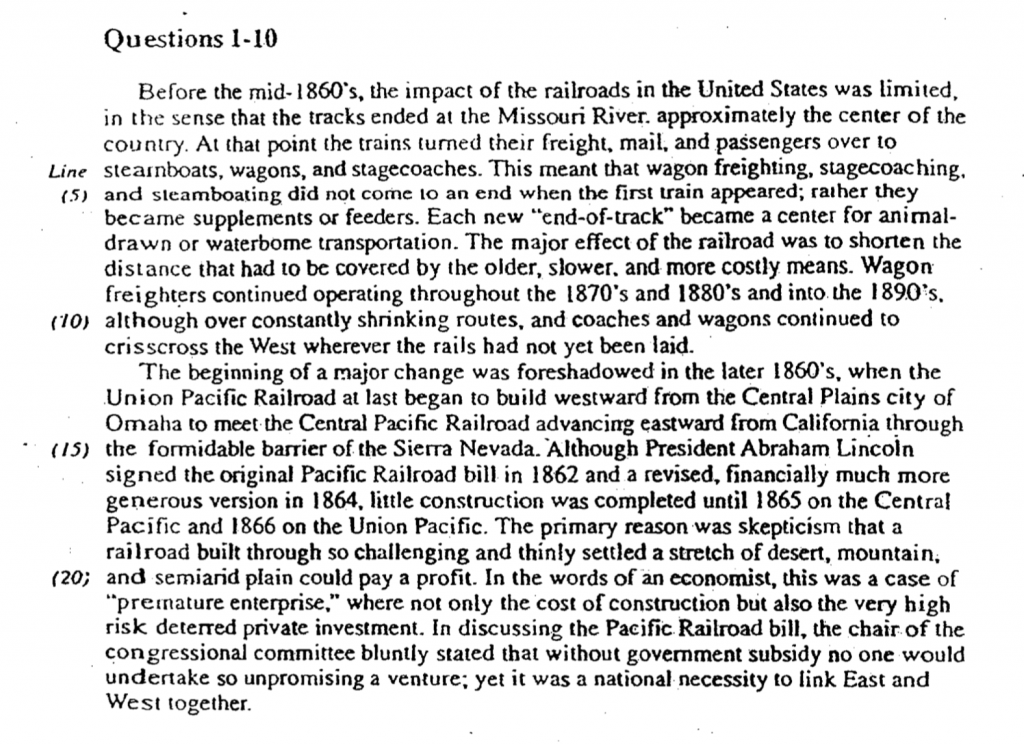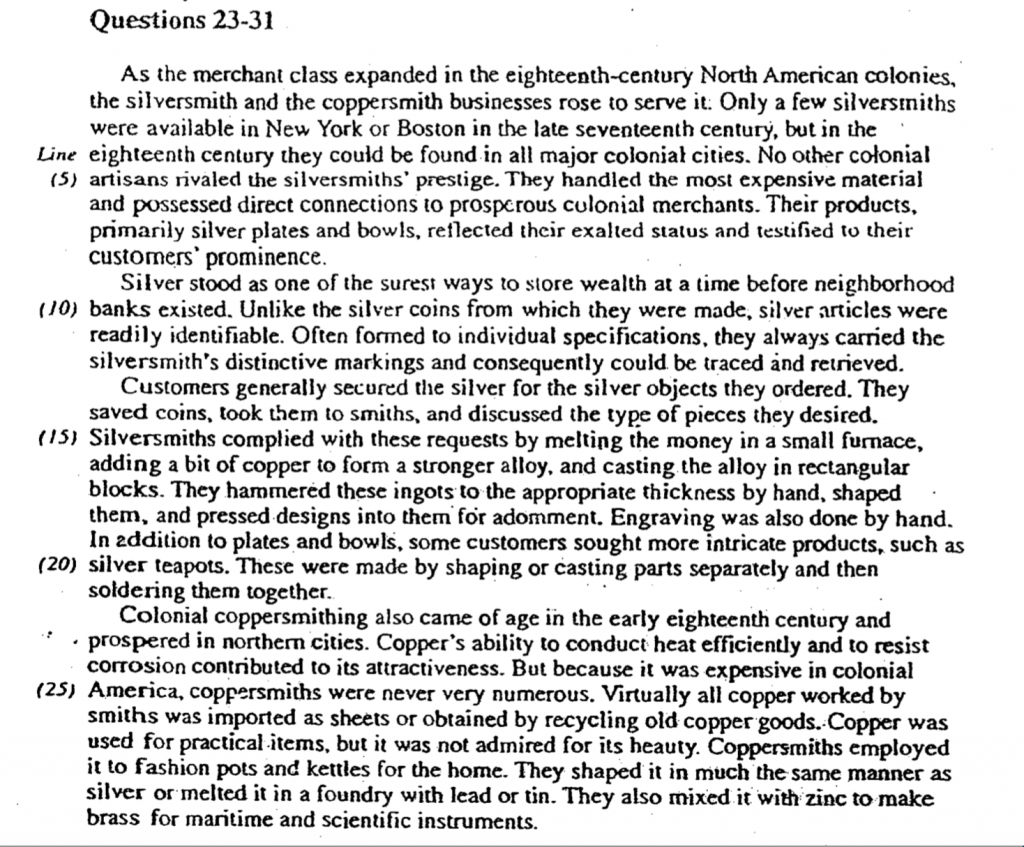READING F POST SCORING
Section 3
Reading Comprehension
Times: 55 minutes
Directions: In this section you will read several passages. Each one is followed by several questions about it. For questions 1-50, you are to choose the one best answer, (A), (B), (C), or (D), to each question. Then, on your ‘answer sheet, find the number
of the question and fill in the space that corresponds to the letter of the answer you have chosen.
Answer all questions following a passage on the basis of what is stated or implied in that passage.
Read the following passage:
The railroad was not the first institution to impose regularity on society, or to
draw attention to the importance of precise timekeeping. For as long as merchants
have set out their wares at daybreak and communal festivities have been celebrated,
people have been in rough agreement with their neighbors as to the time of day. The
value of this tradition is today more apparent than ever. Were it not for public
acceptance of a single yardstick of time, social life would be unbearably chaotic:
the massive daily transfers of goods, services, and information would proceed in
fits and starts; the very fabric of modem society would begin to unravel.
Example I
What is the main idea of the passage?
(A) In modem society we must make more time for our neighbors.
(B) The traditions of society are timeless.
(C) An accepted way of measuring time is essential for the smooth functioning of society.
(D) Society judges people by the times at which they conduct certain activities.
The main idea of the passage is that societies need to agree about how time is to be measured in order to function smoothly. Therefore, you should choose (C).
Example II
In line 5, the phrase “this tradition” refers to
(A) the practice of starting the business day at dawn
(B) friendly relations between neighbors
(C) the railroad’s reliance on time schedules
(0) people’s agreement on the measurement of time
The phrase “this tradition” refers to the preceding clause, “people have been in rough agreement with their neighbors as to the time of day.” Therefore, you should choose (D).
Now begin work on the questions.




